Coffee in the Basement, Tea on the Second Floor: A Short History of John Little at Raffles Place
A look back at John Little’s 170-year history and the lasting mark the store has made on our island.
By Yap Jo Lin
Of all the department stores in Singapore, none has had a longer history than John Little. In all, John Little lasted 174 years; it opened its doors in 1842 and closed its last store at Plaza Singapura in 2016. At one point, John Little had locations all over Singapore, including Specialists’ Shopping Centre (Orchard Gateway today) and Marina Square.
One of its most enduring contributions was to Singapore’s cityscape in the form of its iconic building at Raffles Place. While the Singapore Land Tower now stands in its place, details of the building’s façade have been reproduced at the entrances of Raffles Place Mass Rapid Transit (MRT) Station.
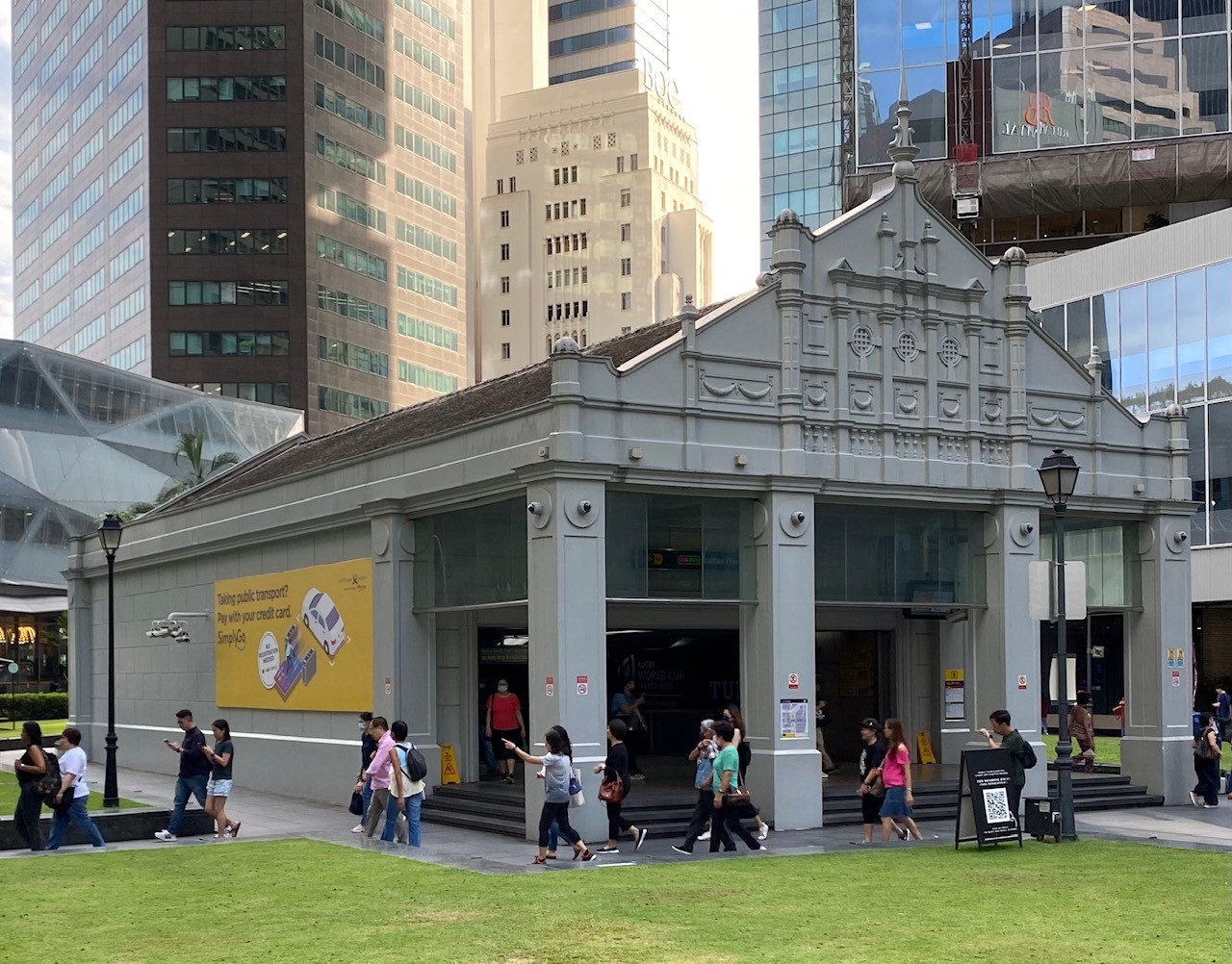
John Little’s Beginnings
The John Little department store got its start in 1842 when Scotsman John Martin Little joined the Raffles Place business of his relative Francis S. Martin, who was a storekeeper and auctioneer. In 1845, Martin exited the company, leaving it in the hands of Little and a Parsi gentleman named Cursetjee Frommurzee. The company changed its name to Little, Cursetjee & Co.1 During this time, Cursetjee brought a gentleman from Australia into the fold. This gentleman was Philip Robinson, who eventually went on to establish rival department store Robinsons (which bought over John Little in 1955).2
The Little-Cursetjee partnership was dissolved in 1853, and John Little teamed up with his younger brother Matthew Little and renamed the company John Little & Co.3 The brothers eventually retired in the UK; John left Singapore in the 1860s and died in Blackheath, south London in 1894, while Matthew moved to Hampstead in north London in 1877 and died in 1902.4
A New Storefront at Raffles Place
Notwithstanding the exit of the Little brothers from the company, the department store continued to thrive and in 1895, the architecture firm Swan & Maclaren was commissioned to design a new storefront for their Raffles Place premises. Architectural historian Julian Davison suggests in his history of Swan & Maclaren that John Little’s impetus for change could have been competition from Katz Brothers Ltd, another department store that was setting up its flagship store at Raffles Place around the same time.5
John Little’s new storefront featured domed pavilions on either side with a “sawn-off” top – meaning that the domes were not perfectly round or sloping at the top. The domes also had dormer windows, or windows that jut out vertically from a sloping plane.
The building plan of the new storefront was titled “Proposed Alterations to Messrs John Little & Coy’s Godown”, interestingly referring to a godown rather than a store or shop. While the term “godown” is associated with a warehouse today, Davison explains that earlier godowns were sometimes multipurpose, storing goods on the ground floor, with offices or reception areas on their upper levels. This was both practical and for security – in the days of the East India Company, godowns also included accommodation that allowed staff to keep an eye on their goods around the clock. In the case of John Little, its godown was for the storage and sale of goods.6
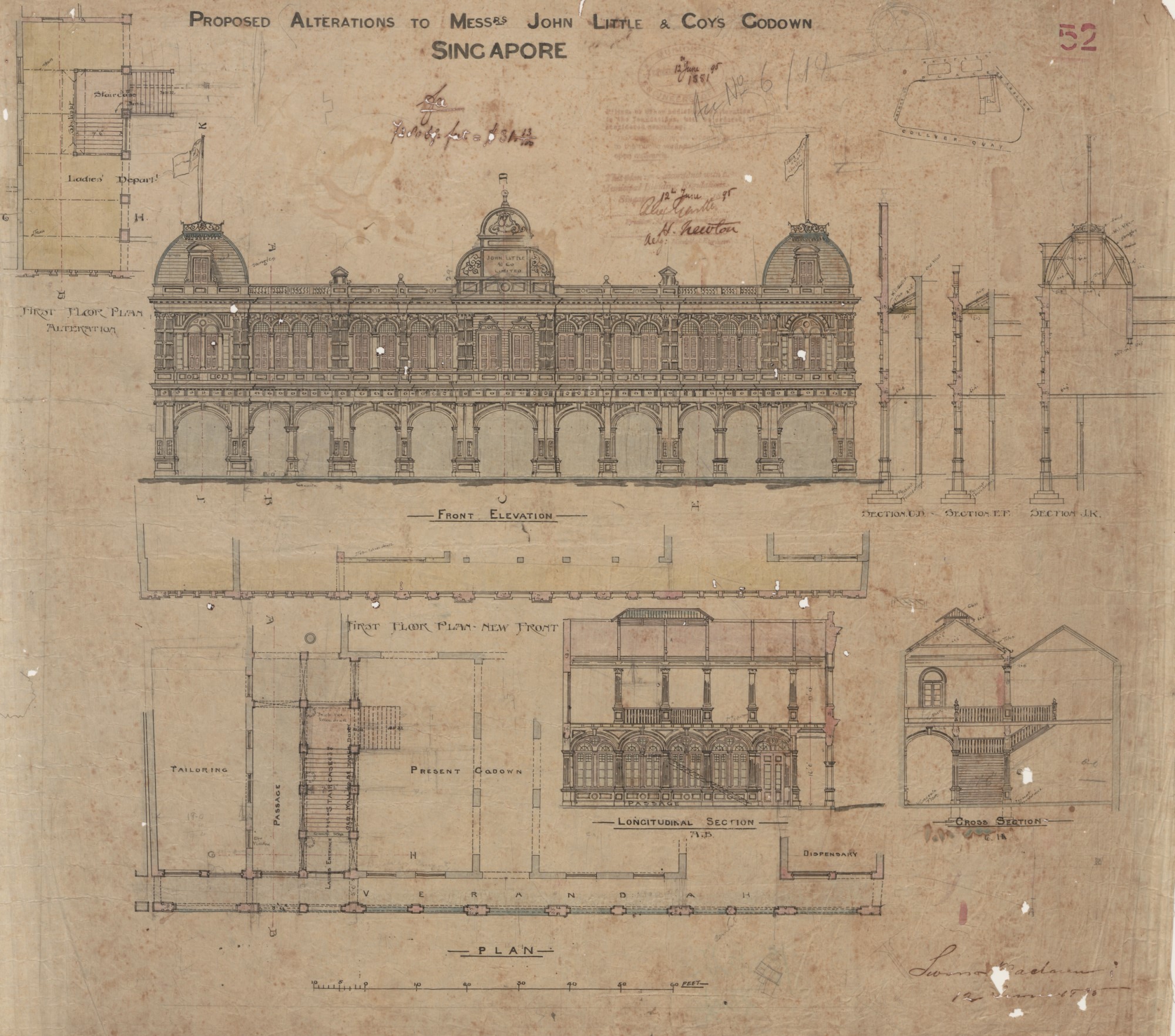
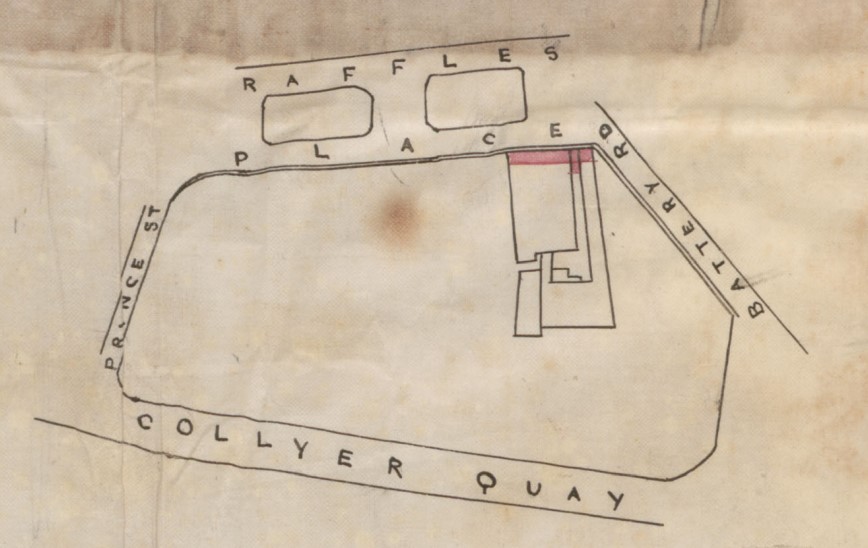
Rebuilding John Little
Swan & Maclaren were called upon again in 1908 to completely rebuild the Raffles Place premises. Among other things, the new building was taller, and the columns and archways on the ground floor were arranged differently. The columns were more widely spaced and the arches between them were less steep, creating a more open feel that invited passers-by to look at the window displays. The Straits Times reported that the passageway outside the building was a spacious 11 ft (3 m) wide, allowing for much more foot traffic than the average shophouse five-foot way.7
Another prominent feature of the new building was the gable, a triangular portion of wall with sloped roofs on either side. John Little’s new building had a gable that stretched 65 ft (19 m) across three bays of the façade, reaching a height of 93 ft (28 m) above ground.8 Details of the gable have been replicated at the entrances to Raffles Place MRT Station as a nod to the iconic building.

%20img0043.jpg)
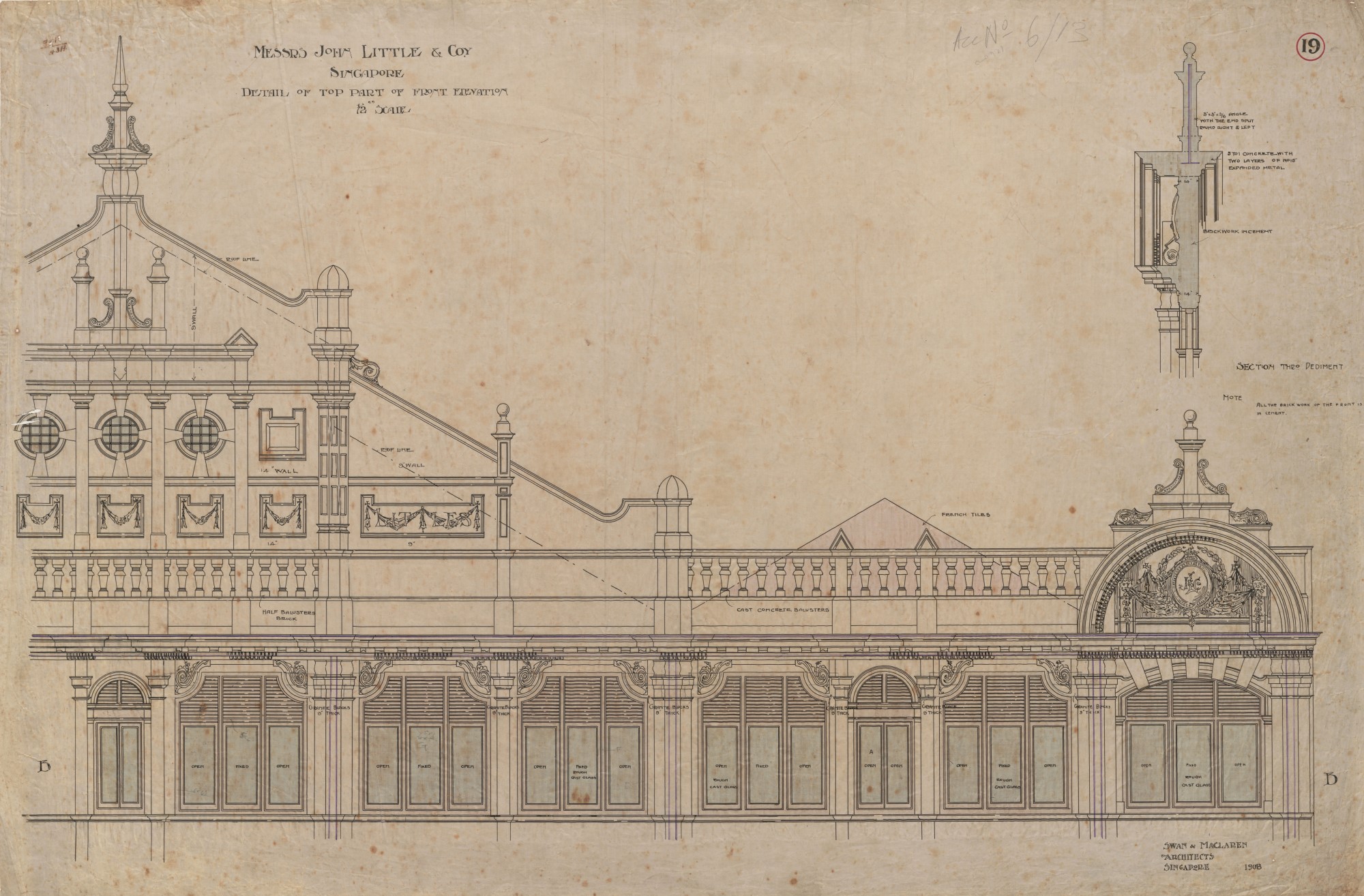
Basement and Retail Space
The John Little building had four storeys, with the lowest floor (which was slightly below ground level) kept for back-of-house operations. The three upper storeys were dedicated to retail.
Besides storage, the lowest floor also housed rooms for coffee grinding and roasting, as well as storing and bottling wine. In her oral history interview with the National Archives of Singapore, pioneering Girl Guide and active supporter of social causes Myra Isabelle Cresson explained that her father had overseen bottling wine from casks or barrels that were imported into Singapore.9 The idea of bottling wine locally may seem strange, but it was probably a practical thing to do then. Wine stored in wooden barrels was more likely to survive a long journey by ship as opposed to wine stored in individual glass bottles. The basement was also where John Little serviced its regional customers. These customers did not come to the physical store in Singapore but instead placed orders from what is now Malaysia, Thailand and Indonesia.10
In the retail space of the upper floors, goods were displayed in an open concept, thanks to a steel-frame construction that had become a de rigueur construction practice in Singapore.11 The store’s timber flooring was a hardwood called kapor (camphor) and the teak interior fittings had been crafted by John Little’s team of 800 Chinese cabinetmakers and polishers. With the exception of Austrian bentwood chairs, these artisans also produced all the furniture that was on sale. The furniture was produced at a workshop off Orchard Road, between Koek and Cavanagh roads – roughly where Orchard Plaza stands today.12
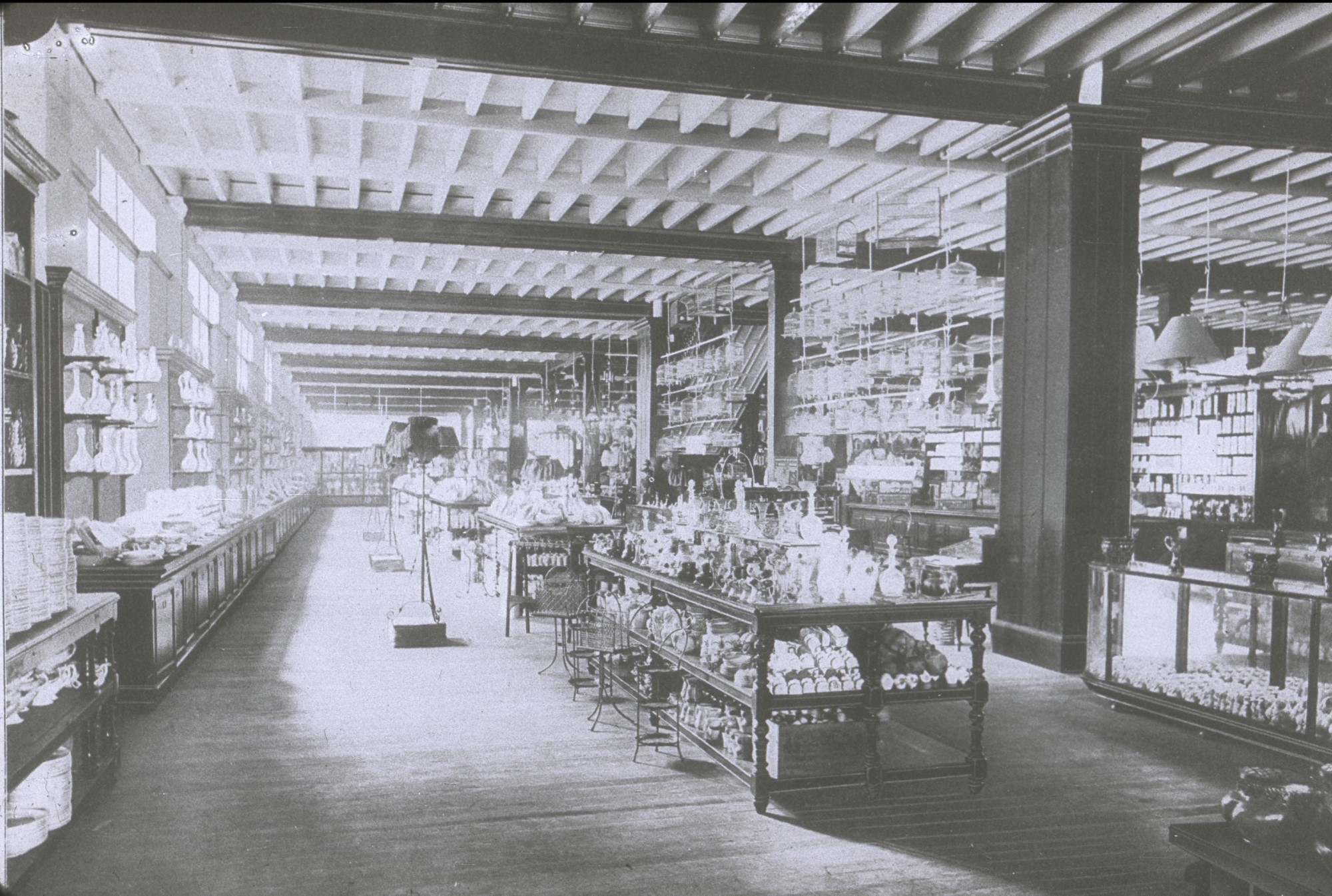
Besides furniture, shoppers were also privy to a wide range of goods at the opening, some of which would be considered unusual today.13 Customers could browse sections in the department store such as drugs and perfumery (the pharmacy);14 bags and trunks (luggage);15 arms and ammunition (a common section in early department stores thanks to hunting);16 women’s drapery (fabrics and textiles);17 and ironmongery (referring to metal-based houseware like the cast-iron pans of today).
Facilities
The facilities at John Little were designed to provide every comfort to its customers. They included two electric lifts, over 50 electric fans, 14 telephones and a post box where mail was collected once every hour from 6 am to 6 pm.18
John Little also had ladies’ retiring rooms – similar to restrooms – as well as reading and writing rooms.19 It may seem odd for a department store to have reading and writing rooms, but the idea originated in Paris at the department store Au Bon Marché. Au Bon Marché introduced a reading room in 1870 as a lounge-type area where customers could sit down, rest and recharge before their next bout of shopping.20
Customers could also relax at John Little’s famous ladies’ tearoom. The tearoom was not just a beautiful space, it was also one of the few restaurants in the area where it was acceptable for women to dine. The tearoom was most likely frequented by European women but not women of other ethnicities. In her oral history interview, former Chinese Women’s Association president Mrs May Wong recalls her visit to the John Little tearoom:21
“And then I went to town and I noticed that there were hardly anybody – any women in town – near John Little’s or Robinsons… The women didn’t go out, in those days. Then I was going downtown one day and my husband said, ‘Well, you have lunch downtown… [Y]ou can go up to John Little’s they have a dining room there. I think some European women go [there] to have lunch.’ … I went up into John Little’s … And then I noticed that the man, the waiter, walking back and forth and looking at me. Finally, I said to him, ‘You wanna ask me something?’ … He says, ‘You’re a visitor here?’ I said yes. He says, ‘Because no Chinese women will come up to eat. And especially you’re eating alone so you must be a visitor.’ I said yes. And then he said, ‘Are you a circus performer?’ Because there was a circus in town from China and there was a charity performance. I said, ‘A what?’ I asked him six times, I couldn’t believe my ears when he said a circus performer. Standing on the tightrope. And I said, ‘Tightrope?’ I said, ‘No, I’m sorry, I’m not a circus performer.’ I said, ‘I just come here on a visit, I’m not a performer.’”22

John Little in the Postwar Period
The end of World War II ushered in many changes in Singapore and John Little was no exception. Archival photos trace the store’s evolution over time – for instance, one photo depicts real life nurses standing in John Little’s window display tending to a dummy patient as part of a recruitment campaign for Singapore hospitals in 1952. The choice of John Little as the chosen location for this recruitment drive suggests that it was no longer just for high society and was attracting a more diverse range of customers by the 1950s. Another photo shows John Little’s name advertised prominently at the front of the store not just in English, but also in Chinese and Jawi – another indication that the store was expanding beyond its European clientele.
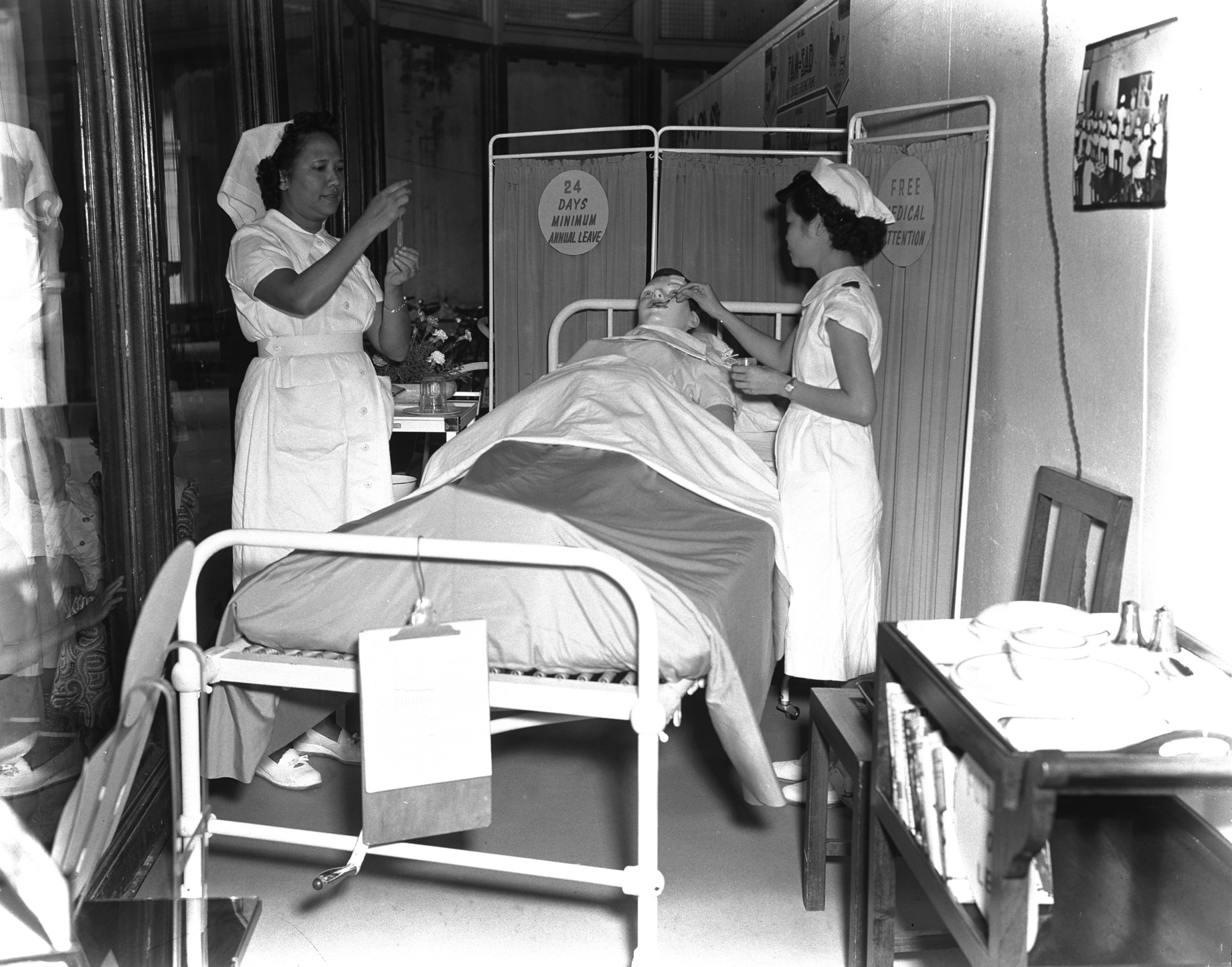
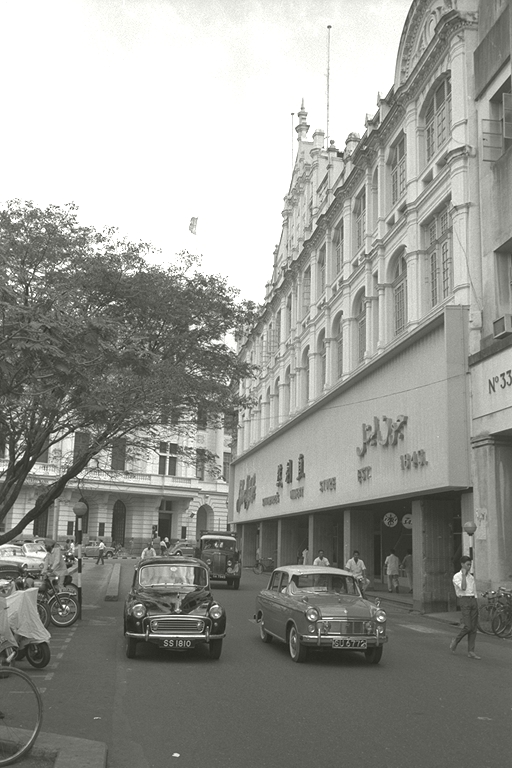
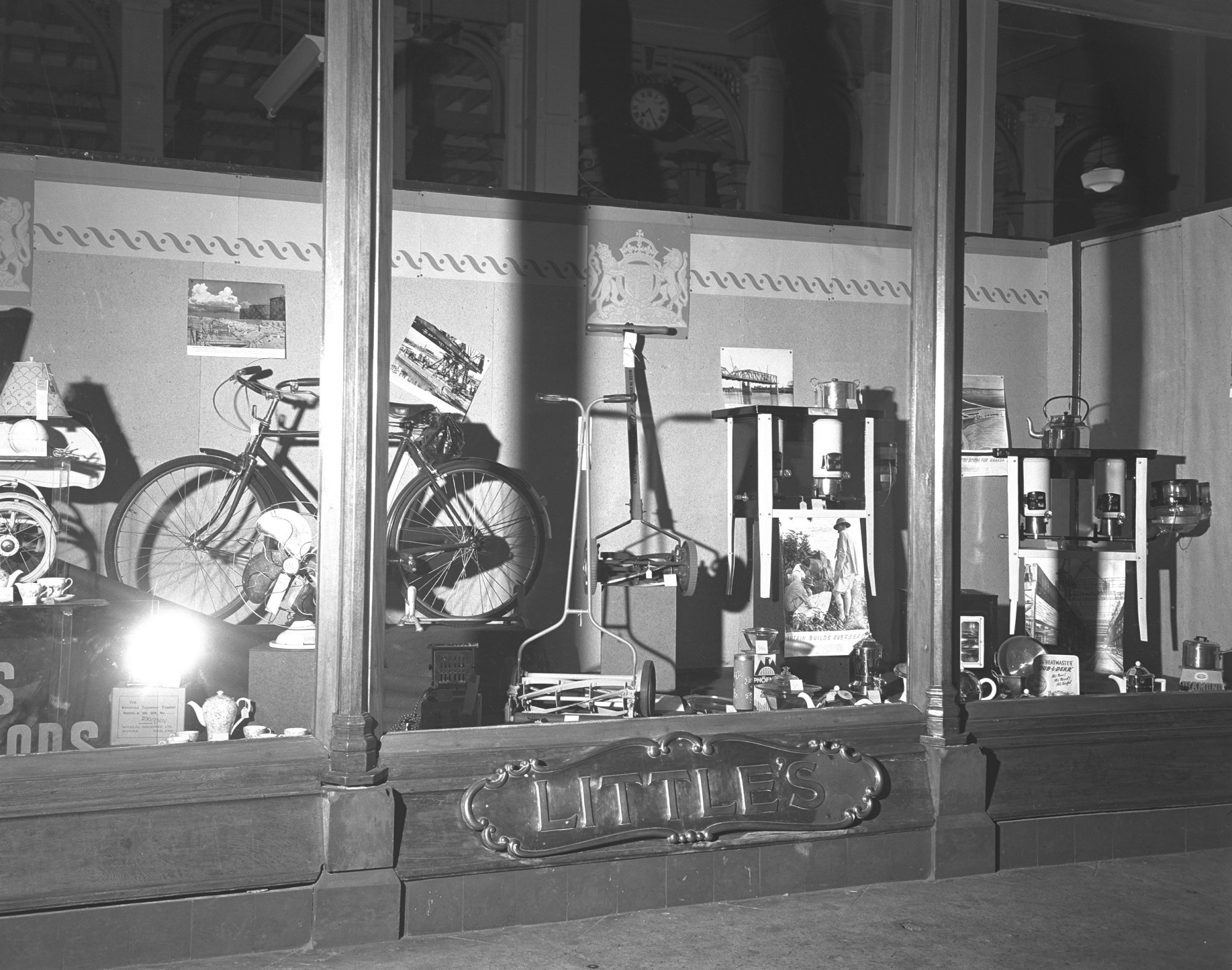
In 1955, Robinsons bought over John Little, and it continued to operate at its Raffles Place premises for about five years.23 Following its departure, other shops and offices occupied the building until it was demolished in 1973 and replaced with Singapore Land Tower.
After John Little moved out of its iconic Raffles Place building, it set up shop in various locations (such as Specialists’ Shopping Centre). The department store later moved into the heartlands, establishing itself in suburban malls such as Compass Point, White Sands, Tiong Bahru Plaza and Jurong Point. In 2007, the John Little flagship store moved out of Specialists’ Shopping Centre to Marina Square. A year later, Robinson & Co. was bought over by Dubai-based conglomerate Al-Futtaim. By 2015 only two John Little stores – at Plaza Singapura and Jurong Point – remained. Both outlets were shuttered in 2016, bringing John Little’s long and storied history to a close.24
 Yap Jo Lin is a Senior Archivist with the National Archives of Singapore. Her responsibilities include managing the archives’ collection of building plans.
Yap Jo Lin is a Senior Archivist with the National Archives of Singapore. Her responsibilities include managing the archives’ collection of building plans.Notes
-
Charles Burton Buckley, An Anecdotal History of Old Times in Singapore (Singapore: Oxford University Press, 1984), 350. (From National Library, Singapore, call no. RSING 959.57 BUC) ↩
-
Annabeth Leow, “John Little to Close Final Outlet at Plaza Singapura: 174 Years of History at a Glance,” Straits Times, 7 November 2016, https://www.straitstimes.com/singapore/john-little-to-close-final-outlet-at-plaza-singapura-174-years-of-history-at-a-glance. ↩
-
John and Matthew Little had another brother Robert who also made Singapore his home. Robert was a doctor and the eldest of the three and was Singapore’s first coroner. ↩
-
Buckley, An Anecdotal History of Old Times in Singapore, 350–51; Julian Davison, Swan & Maclaren: A Story of Singapore Architecture ([Novato]: ORO Editions; Singapore: National Archives of Singapore, 2020), 46. (From National Library, Singapore, call no. RSING 720.95957 DAV) ↩
-
Davison, Swan & Maclaren, 46. ↩
-
Davison, Swan & Maclaren, 54. ↩
-
“John Little and Co,” Straits Times, 19 September 1910, 7. (From NewspaperSG) ↩
-
Davison, Swan & Maclaren, 46. ↩
-
Myra Isabelle Cresson, oral history interview by Clare Chiang, 20 August 1985, MP3 audio, Reel/Disc 1 of 12, National Archives of Singapore (accession no. 000594), 06:15. Cresson was awarded the Most Excellent Order of the British Empire (also known as the MBE) in 1952 for her work on social causes including healthcare and children. In the same year, she was appointed as the first president of the Girl Guides’ Central Local Association. She then served as the first Singaporean Colony Commissioner of Girl Guides Singapore from 1957–59. ↩
-
Davison, Swan & Maclaren, 46. ↩
-
“Cosmetics and Personal Care Products in the Medicine and Science Collections: Fragrance,” Smithsonian National Museum of American History Behring Center, last accessed 2 October 2023, https://americanhistory.si.edu/collections/object-groups/health-hygiene-and-beauty/fragrance. ↩
-
“The History of the Humble Suitcase,” Smithsonian Magazine, last accessed 2 October 2023, https://www.smithsonianmag.com/history/history-humble-suitcase-180951376/; “Trunks and Travelling,” Victoria and Albert Museum, last accessed 2 October 2023, https://www.vam.ac.uk/articles/trunks-and-travelling. ↩
-
Brent Alan Shannon, The Cut of His Coat: Men, Dress, and Consumer Culture in Britain, 1860–1914 (Athens: Ohio University Press, 2006), 66. ↩
-
“Drapery shop,” Collins English Dictionary, last accessed 20 February 2023, https://www.collinsdictionary.com/dictionary/english/drapery-shop. ↩
-
Nebojša Tabacki, Consuming Scenography: The Shopping Mall as a Theatrical Experience (London: Methuen Drama, 2020), 20. (From National Library, Singapore, call no. RSING 381.11 TAB) ↩
-
Mrs May Wong was born in Sacramento, California, in 1899 and moved with her husband to Singapore in 1930. She became very active in community work and was the longest-serving president of the Chinese Women’s Association. See “The Honoured Inductees to the Singapore Women’s Hall of Fame: May Wong,” Singapore Women’s Hall of Fame, last updated 11 March 2021, https://www.swhf.sg/profiles/may-wong/. ↩
-
May Wong nee Hing (Mrs S K Wong), oral history interview by Liana Tan, 18 May 1982, transcript and MP3 audio, Reel/Disc 8 of 18, National Archives of Singapore (accession no. 000093) ↩
-
Chan Swan Bee, “New Move at John Little,” Singapore Free Press, 28 September 1960, 1. (From NewspaperSG) ↩
-
Joshua Chia and Shereen Tay, “John Little”, in Singapore Infopedia. National Library Board Singapore. Article published November 2020. ↩

